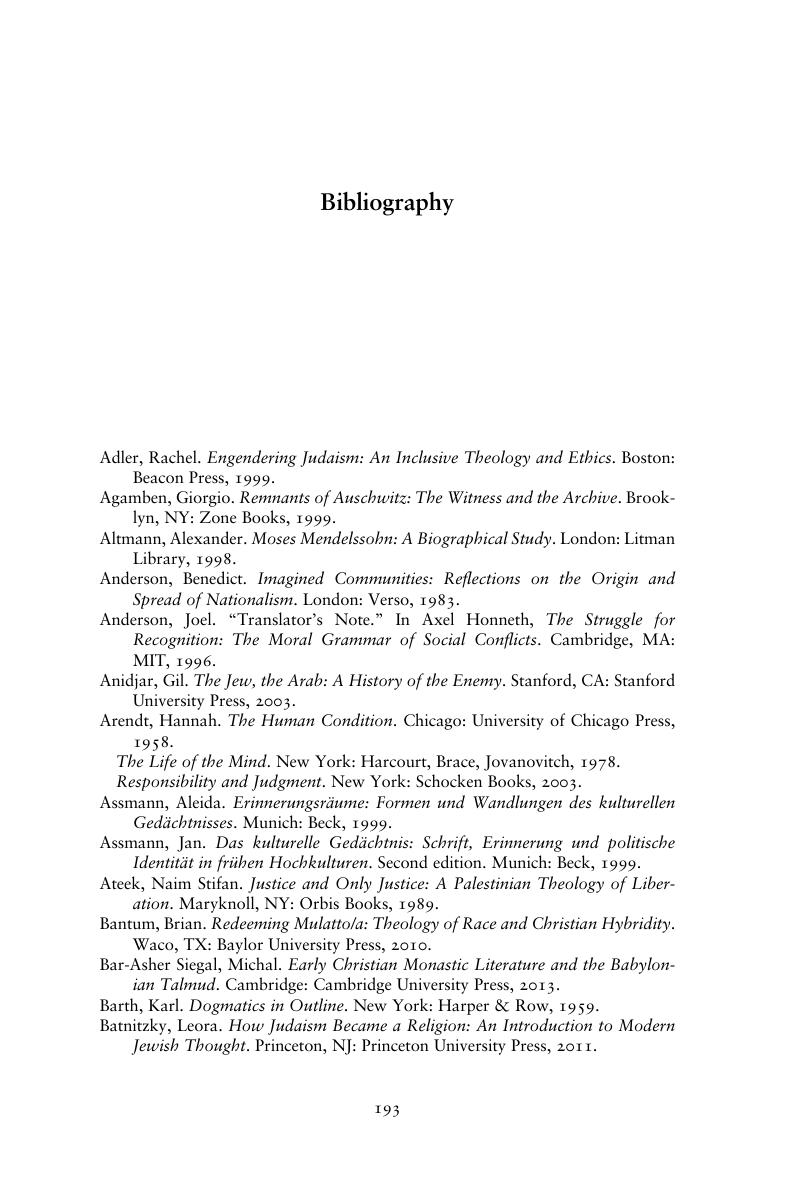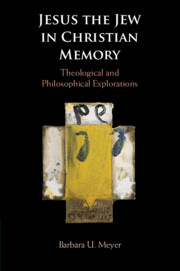Book contents
- Jesus the Jew in Christian Memory
- Jesus the Jew in Christian Memory
- Copyright page
- Dedication
- Contents
- Acknowledgments
- Introduction
- 1 What Is Christian Memory?
- 2 The Past: History of Halakhah and Dogma
- 3 The Present: Jesus and Jewish Continuity
- 4 The Future: Regarding the Human
- 5 After and Against Suffering
- 6 Between Jesus, the Jew, and the Other
- Conclusion
- Postscript
- Bibliography
- Index
- References
Bibliography
Published online by Cambridge University Press: 26 February 2020
- Jesus the Jew in Christian Memory
- Jesus the Jew in Christian Memory
- Copyright page
- Dedication
- Contents
- Acknowledgments
- Introduction
- 1 What Is Christian Memory?
- 2 The Past: History of Halakhah and Dogma
- 3 The Present: Jesus and Jewish Continuity
- 4 The Future: Regarding the Human
- 5 After and Against Suffering
- 6 Between Jesus, the Jew, and the Other
- Conclusion
- Postscript
- Bibliography
- Index
- References
Summary

- Type
- Chapter
- Information
- Jesus the Jew in Christian MemoryTheological and Philosophical Explorations, pp. 193 - 205Publisher: Cambridge University PressPrint publication year: 2020



